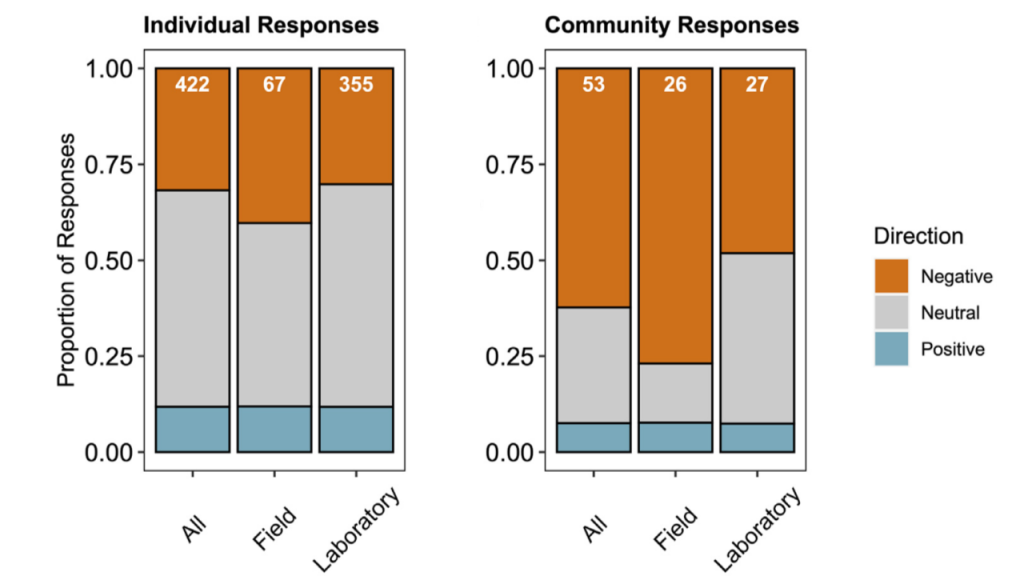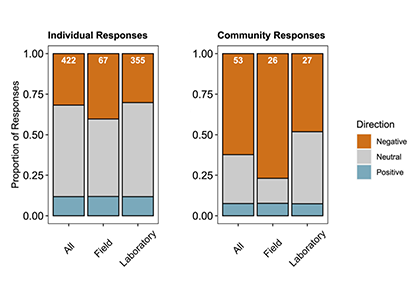Ocean acidification research has grown over the past few decades. Much of recent research documents negative impacts of changing carbonate chemistry on calcifying marine organisms in laboratory experiments. At the 2018 Ocean Acidification PI Meeting, a group of us asked “Can these laboratory responses to ocean acidification be scaled up to accurately predict the responses of marine ecosystems?” To answer this research question, we developed a semi-quantitative synthesis of benthic calcifying algae responses to ocean acidification, recently published in the ICES Journal of Marine Science.

Figure 1. Comparing directional responses of individuals and communities to acidification in laboratory and field settings highlights mismatches. Specifically, field studies document higher proportion of negative responses compared to laboratory experiments. We provide a series of recommendations for future research to better bridge this gap of understanding in responses to ocean acidification. Figure modified from Page et al. 2022.
We detail in the paper how the proportion of positive, neutral, and negative responses in laboratory experiments often didn’t match field observations. Additionally, laboratory experiments mainly report short-term responses (days to weeks) across tropical and temperate locations. In contrast, field studies emphasize long-term responses (months to years) from fewer global locations. Using our synthesis, we developed nine recommendations that will enhance our ability to translate laboratory experiment results into actual responses of marine taxa to ongoing and future acidification in the natural environment. These future research directions are applicable not only to ocean acidification studies but can be directly applied to the broader field of climate change. We hope these recommendations will lead to greater confidence in our projections of climate change impacts at different ecological scales, and better inform the conservation and management of our valuable marine ecosystems.
Backstory
Initially, we set out to answer this research question through a meta-analysis comparing the effect size of the impacts of ocean acidification on benthic calcifying macroalgae in laboratory and field settings. We quickly realized this approach was not going to work because of the much smaller number of responses recorded in field settings, the different methods used, and response parameters measured between the laboratory and field; these differences made calculating and comparing effect sizes impossible. Therefore, we landed on the approach of conducting a semi-quantitative synthesis to compare directional responses in laboratory and field settings. The results of this synthesis and the process of developing a robust research approach to answer our question inspired us to discuss and develop the recommendations for future research presented in the paper.
Authors (affils and Twitter handles)
Heather N. Page (Sea Education Association) @heathernicopage
Keisha D. Bahr (Texas A&M University – Corpus Christi) @thebahrlab
Tyler Cyronak (Nova Southeastern University) @tcyronak
Elizabeth B. Jewett (National Oceanic and Atmospheric Administration) @LibbyJewett
Maggie D. Johnson (King Abdullah University of Science and Technology) @MaggieDJohnson
Sophie J. McCoy (University of North Carolina at Chapel Hill) @MarEcology




